Herbicide Roundup, how to dilute, how to use correctly, analogues
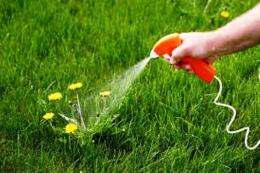
Often, gardeners and gardeners have to deal with the problem of eliminating weeds. It often turns out to be quite difficult to fight it manually. For this purpose, you can use Roundup.
The article will tell you about the herbicide Roundup, its properties, features, rules of use, and its analogues.
Content:
- Herbicides - what are they?
- Benefits of Roundup
- Mechanism of action of Roundup
- How to use
- Timing of collapse
- Analogs
- New TransSorb technology
Herbicides - what are they?
These are chemicals that are used to control weeds. They can be purchased at garden centers or stores that specialize in selling seeds. You do not need a prescription to purchase the drug. These products are available in a wide range.
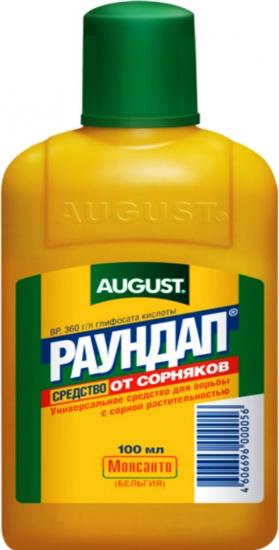
Herbicides used to control weeds. There are two groups:
- continuous action - drugs that kill all vegetation in a row. They are most often used in reservoirs, at airfields, and on railway lines;
- selective or selective action - they destroy certain types of vegetation, while no harm is caused to other plants. It is these drugs that are used to control weeds in gardens or summer cottages.
This division is arbitrary, because the concentration of the active substance and its consumption can make one and the same agent manifest itself in completely different ways: as a means that has a selective or continuous effect.
In addition, there is a division according to the direction of use:
- herbicides – used to eliminate weeds;
- arboricides - used to control trees and shrubs;
- algaecides – help destroy aquatic vegetation.
They are also distinguished by the method of influence:
- contact - when they come into contact with plants, they cause damage at the points of contact, do not penetrate directly into plant;
- systemic - have an effect upon contact with plants. Through the point of contact they are distributed throughout the plant, affecting it completely.

Benefits of Roundup
Let's look at the benefits of this substance designed to combat weeds:
- allows for a minimum number of treatments;
- kills weeds various varieties - perennials, annuals, cereals;
- Mint, wheatgrass and sorrel respond well to its effects;
- decomposes quickly enough in the ground into harmless components. It is the safest herbicide. Has hazard class 3;
- does not affect the germination of seeds of cultivated plants;
- does not affect weeds through soil;
- often used to dry crops before harvesting.
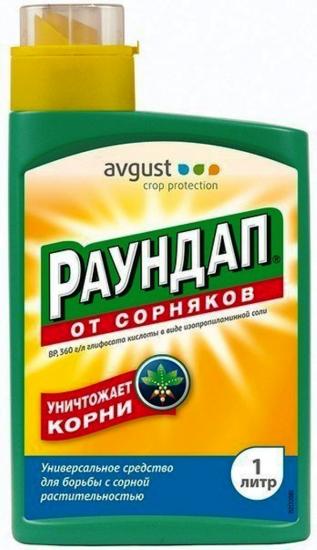
This improves the quality of the collected harvest. The reduced moisture content in them allows for improved storage conditions.
Mechanism of action of Roundup
The main active ingredient is glyphosate.After it hits the foliage of weeds, it penetrates into plant tissues within 4-6 hours. When treating tree-like plants, its penetration into their tissues will take a little longer.
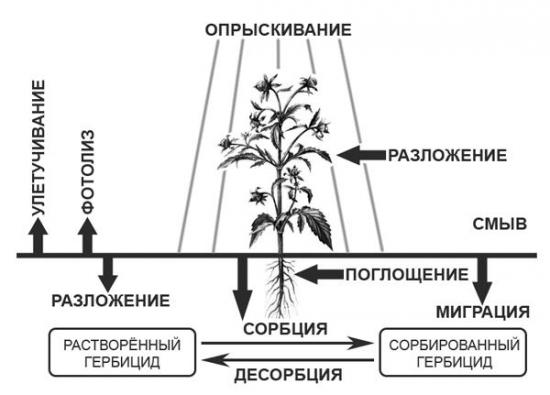
The product, moving through the tissues, reaches the young shoots, leaves, roots, internodes of cereals. Under its influence, the activity of the EPSPS enzyme is suppressed, which provokes the breakdown of chloroplasts, deterioration of photosynthesis, and respiratory processes.
For this reason, growth slows down, foliage turns yellow, and plants die. Within 3-4 hours, you can observe the first signs of the effects of this drug.
The weeds will die completely after 5-10 days. 30 days is the maximum period of exposure to the solution. The duration of the process is directly dependent on the type of weed and weather conditions.
How to use
Roundup should be used before sowing or 3-5 days before the germination of agricultural plants. Usually herbicides used in the spring to suppress the growth of weeds that appear at this time.
To achieve greater effect, you must carefully study the rules of use. herbicide Roundup.
The product contains 180 grams per liter of surfactants, thanks to which it is retained on the foliage of weeds and penetrates into their tissues.
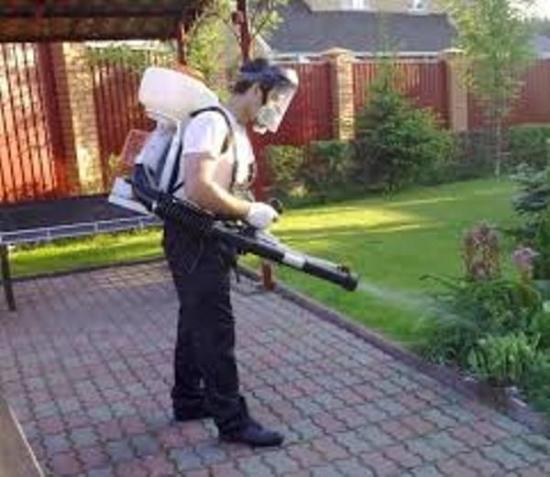
The concentration of the substance in the solution should be from 1 to 3 percent. The lower the concentration, the less effective.
To properly prepare the working solution, Roundup must be diluted only in clean water, because the presence of silt or clay contributes to a decrease in effectiveness.
The dosage of the drug must be increased if hard water is used, but the consumption must be reduced. The consumption of Roundup working solution per hundred square meters should be 5-10 liters.
For maximum effectiveness of the product, you need to spray weeds strictly following the technology.
The leaves of weeds should be evenly wetted. The sprayer nozzle should be located at a height of 50 centimeters above the weeds.
You can work with the herbicide only in clear, windless weather.
Do not smoke or eat while working. Upon completion of work, you need to thoroughly wash the sprayer and the container that was used to prepare the solution.
Timing of collapse
Getting the product into priming not dangerous for seeds. It does not affect their germination. When it gets into the soil, Roundup reacts with the metal ions contained in it. It loses activity and disintegrates.
Then, under the influence of soil microorganisms, it turns into water, ammonia, carbon dioxide. The activity of microorganisms affects the half-life of the substance. It can range from 18 to 45 days.
Analogs
Roundup has been used by gardeners for a long time and has proven itself well. It has many analogues. They are often purchased due to their lower price. They do not pose a danger to cultivated plants and are manufactured using technologies that have passed special tests.
Total
Effectively fights all types of weeds. The advantage of this product is that immediately after its use you can sow crops.
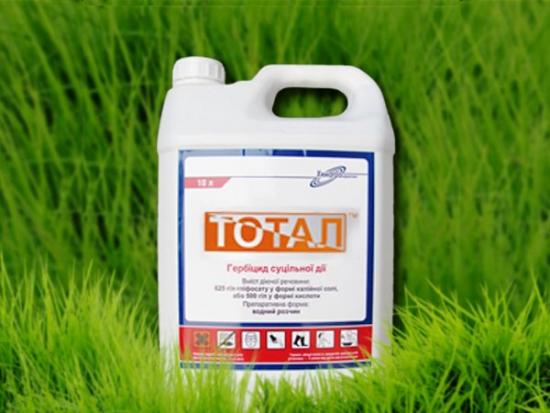
It does not affect the soil, which makes it safe for crops.Before using the drug, you must carefully study the instructions for its use - after all, correct use is the key to success.
Glyfovit Extra
Excellent control of annual and perennial weeds. Its advantage is its rapid penetration into plants, quickly causing wilting and decomposition. Does not harm cultivated plants. It can be used even after crops have sprouted.
Otaman
Another analogue of Roundup. Has a continuous effect. Apply it before sowing.
Tornado 500
Widely used to control various types of weeds. It has an effect upon direct contact with them. In an area that has been treated with this product, all vegetation will be completely eliminated. It should be applied before sowing or before the emergence of crops.
Isopropylamine salt of glyphosate is the main active substance included in this drug. This is a complete analogue of Roundup.
New TransSorb technology
This technology has greatly simplified the use of Roundup, and its effectiveness has increased significantly. The new product is called Roundup Max.

The instructions for using this product say that when it was released, a completely new technology was used, which includes the use of surfactants. They allow the herbicide to affect the lipid compounds of plant tissues.
Lipophytic substances that are present in the new herbicide have an effect on fatty compounds located on foliage weeds. Thanks to this, glyphosate penetrates the plant much faster.
When using this product, almost twice as much active substance enters the root system of weeds. This makes it possible to use the weed control product Roundup Max when there is dew on the plants or during dry periods.
The temperature range also increased. Now it ranges from 2 to 30 degrees above zero.
Let's watch a video on how to properly use Roundup:

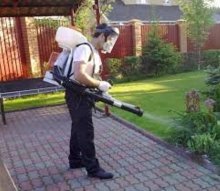
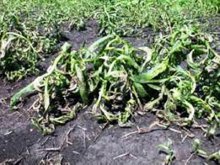
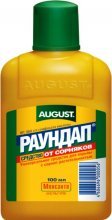
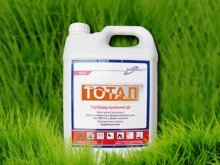
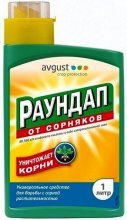
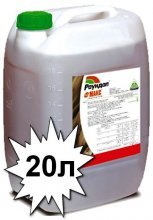
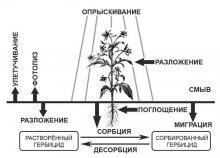
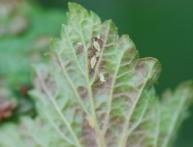
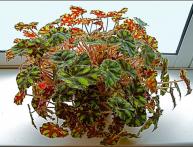
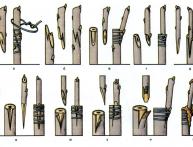





Comments
I have always fought weeds manually and this is certainly not an easy task, but I did not know about herbicides and their use before. I’ve been trying Otaman for the last two years and of course I liked it. There are significantly fewer weeds.